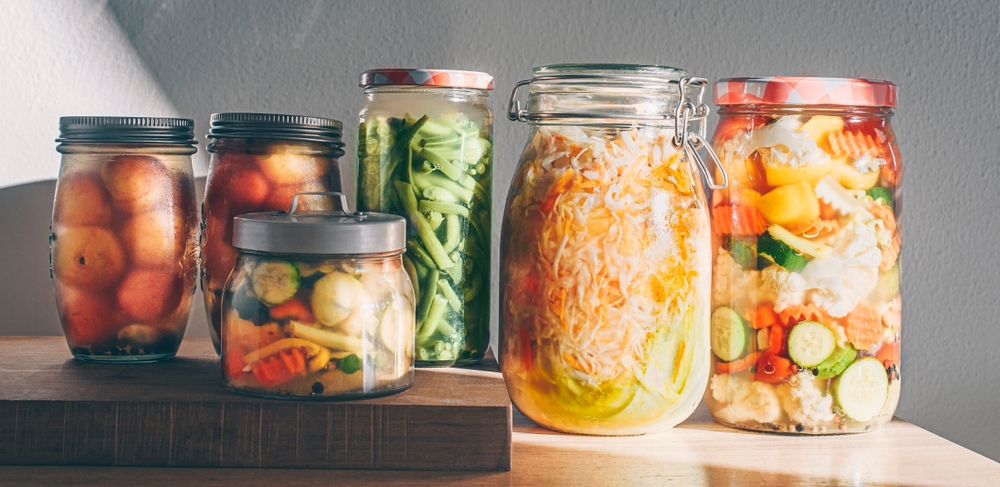Sour Power: Exploring the Tangy World of Pickled Vegetables
Dive into the zesty universe of pickled vegetables, where tangy flavors and crunchy textures collide. From classic dill pickles to exotic kimchi, this culinary adventure will tantalize your taste buds and revolutionize your approach to preserving produce. Get ready to embark on a journey through the art of pickling, discovering new techniques and global traditions along the way.

The acidity not only imparts that signature sour taste but also acts as a natural preservative, extending the shelf life of vegetables far beyond their usual expiration date. This process also enhances the nutritional profile of the vegetables, increasing their vitamin C content and introducing probiotics that support gut health. As you bite into a crisp pickle, you’re not just enjoying a burst of flavor – you’re also reaping the benefits of this age-old preservation technique.
Global Pickle Parade
Pickled vegetables are a universal culinary delight, with each culture adding its unique twist to the art. In Germany, sauerkraut reigns supreme, offering a tangy kick to bratwurst and other hearty dishes. Across the ocean in Japan, tsukemono adds vibrant color and flavor to traditional meals, ranging from pickled daikon to umeboshi plums. India’s achaar packs a spicy punch, while Eastern European countries celebrate the diverse world of pickled peppers, carrots, and cabbage.
Exploring these global variations not only expands your palate but also provides insight into different culinary traditions. Each pickle tells a story of resourcefulness, preservation, and cultural identity. By incorporating these international flavors into your cooking, you can transform ordinary meals into extraordinary culinary experiences, bridging cultures one pickle at a time.
DIY Pickling: A Beginner’s Guide
Embarking on your pickling journey is easier than you might think. With just a few basic ingredients and some creativity, you can start creating your own pickled masterpieces at home. Begin with simple quick pickles, also known as refrigerator pickles, which don’t require canning equipment or extensive knowledge of food preservation techniques.
Start by selecting fresh, crisp vegetables like cucumbers, carrots, or radishes. Prepare a brine using vinegar, water, salt, and sugar, adjusting the ratios to suit your taste preferences. Experiment with different vinegars – apple cider, rice, or white wine vinegar each bring their unique flavors to the mix. Add aromatics like garlic, dill, or peppercorns to create depth and complexity in your pickles.
Once you’ve mastered the basics, venture into the world of fermented pickles. This traditional method relies on salt brine and natural bacteria to create that signature tangy flavor. While it requires more patience, the results are deeply satisfying and packed with probiotic benefits.
Beyond the Jar: Creative Uses for Pickled Veggies
Pickled vegetables aren’t just for snacking straight from the jar. These versatile ingredients can elevate a wide range of dishes, adding complexity and brightness to your culinary creations. Chop pickled onions or jalapeños to top tacos or burgers, lending a zesty crunch to each bite. Blend pickled vegetables into dips and spreads for an unexpected twist on classic recipes.
In salads, pickled vegetables shine as both ingredients and dressing components. Their acidity can replace or complement traditional vinaigrettes, while their crunch adds textural interest. Don’t overlook their potential in cocktails either – a pickled carrot or green bean can transform a Bloody Mary from ordinary to extraordinary.
For a show-stopping appetizer, create a charcuterie board featuring an array of homemade pickles alongside cured meats and cheeses. The contrasting flavors and textures will delight your guests and showcase your pickling prowess.
Pickling for Health and Sustainability
Beyond their culinary applications, pickled vegetables offer numerous health benefits and contribute to a more sustainable food system. The fermentation process involved in traditional pickling methods produces beneficial probiotics that support digestive health and boost the immune system. These good bacteria can help balance gut flora, potentially improving overall well-being.
From a sustainability perspective, pickling is an excellent way to reduce food waste. By preserving vegetables at their peak, you can extend their usability well beyond their fresh state. This practice allows you to take advantage of seasonal abundance, enjoying local produce year-round while supporting local farmers and reducing your carbon footprint.
Additionally, the low-tech nature of pickling makes it an accessible form of food preservation for communities worldwide. It requires minimal equipment and energy, making it a sustainable choice for both home cooks and large-scale producers.
Pickle Perfection: Tips and Tricks
-
Always use fresh, high-quality vegetables for the best flavor and texture
-
Sterilize jars and utensils to prevent unwanted bacteria growth
-
Experiment with different spice blends to create unique flavor profiles
-
For crunchier pickles, add a grape leaf or oak leaf to the jar
-
Don’t be afraid to mix vegetables in a single jar for interesting combinations
-
Use pickling salt instead of table salt to avoid cloudy brine
-
Let pickles rest for at least 24 hours before tasting to allow flavors to develop
In conclusion, the world of pickled vegetables offers endless possibilities for culinary exploration and creativity. From understanding the science behind the process to experimenting with global flavors and innovative uses, pickling is a skill that can transform your approach to cooking and eating. Embrace the tang, crunch, and vibrant flavors of pickled vegetables, and let your taste buds embark on a sour adventure that’s both delicious and nutritious.





